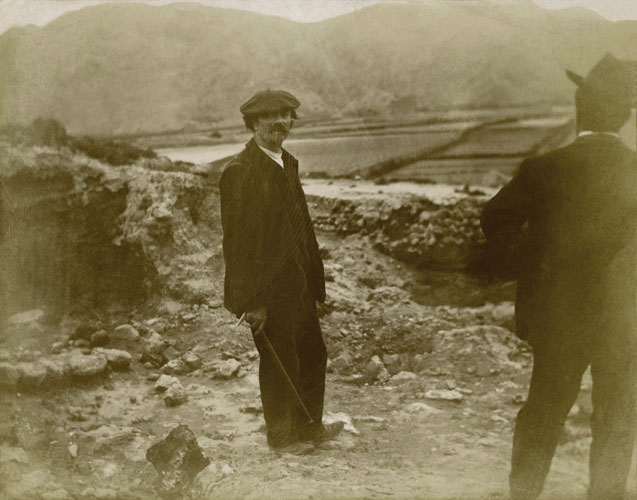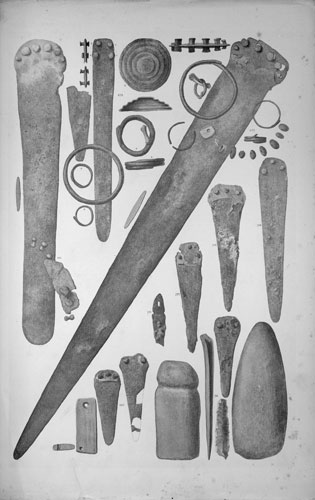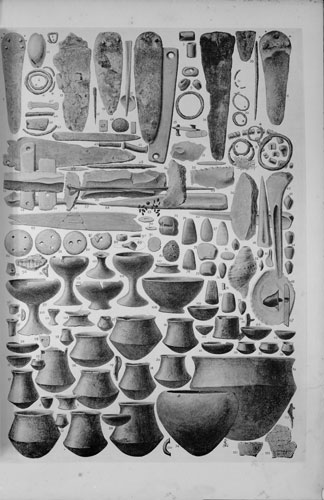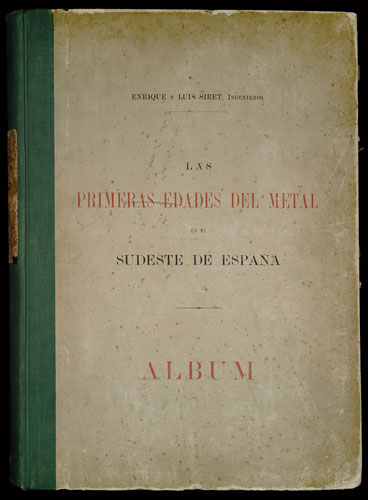català
español
english
français
Archaeology and political and cultural Catalanism
The origins of an exceptional decade, 1907-1914
World War 1, Mancommunity, IEC and Pere Bosch Gimpera
1915. A first attempt at professionalization
Catalan archaeology’s prodigious decade
Catalan archaeology in and beyond Catalonia
The great adventure in Baix Aragó
The Balearic and Pityuses Islands: the personal project of J. Colominas
The final agony of a prodigious decade
Catalan archaeology in and beyond Catalonia. Integration and a desire to expand
With the founding in 1907 of the IEC, Prat de la Riba – thanks to his privileged position as President of the Barcelona Provincial Council – was able to consolidate the study of art and archaeology in Catalonia thanks to the funding originating from some time before the creation of the Mancommunity that enabled the IEC to look beyond the constraints of the provincial boundaries of Barcelona.
With the Mancommunity in existence and, as of 6 April 1914, Prat de la Riba as its President, on 15 September 1914 the minutes of the Historical-Archaeological Section report that: “ […] we have been presented with the opportunity to begin excavations that […] we hope we will produce notable results. The sites to be explored are where frontiers of Catalonia, Valencia and Aragó meet […]”.
The criterion that guided the selection of the areas where the IEC would undertake archaeological work was essentially based on the existence of Catalan culture in the form of its language.
A long gestation period
The tradition of historico-archaeological research in Catalonia dated back to way before the creation of the Mancommunity in 1914: there had always been an interest in work carried out in Spain and further afield by Spanish and other archaeologists, who were often co-opted actively to work on excavations in Catalonia.
Barcelona and the Siret brothers
Catalonia had a long and intense relationship with the Belgian brothers Henri and Louis Siret, two civil mining engineers who – above all Louis – had carried out extraordinary work on the pre- and protohistory of the south-east of the Iberian Peninsula thanks to their excavations in the mines located between Cartagena and El Cabo de Gata (Almeria) and, above all, at Las Herrerias (Cuevas de Almanzora). Their master work, Les premiers âges du métal dans le Sud-Est de l’Espagne (Anvers, 1887), won the Martorell Prize and was published in 1890 in Spanish in Barcelona. Some of their finds were put on show during the Universal Exhibition in Barcelona in 1888, where their work was awarded a gold medal. The Siret brothers made a generous donation of their archaeological treasures to Barcelona City Council, which handed them over to the Martorell Museum, inaugurated in 1882, in the Parc de la Ciutadella.




Photograph taken in May 1909 on the expedition to Andalusia undertaken by Emili on behalf of the Museums Board to acquire new archaeological specimens. Louis Siret is in the centre of the photo. 1909.
Probably taken by Emili Gandia himself.
MAC Archive.
Gandia Collection.
Illustrations from the second volume of the book Les premiers âges du métal dans le Sud-Est de l’Espagne by Henri and Louis Siret. 1890.
MAC Library.
Illustrations from the second volume of the book Les premiers âges du métal dans le Sud-Est de l’Espagne by Henri and Louis Siret. 1890.
MAC Library.
Cover of the book Les premiers âges du métal dans le Sud-Est de l’Espagne by Henri and Louis Siret. 1890.
MAC Library.
The acquisition policies of the Barcelona Museums Board
The consolidation of the institutions empowered with the conservation and development of Catalan heritage (the Museums Board, 1902; Institute of Catalan Studies, 1907) boosted the number of contacts between professionals and enthusiasts, full-time or otherwise, and led to a significant increase in the number of research projects carried out beyond the administrative frontiers of Catalonia.

Page from the definitive report submitted by Emili Gandia to the Museums Board during the session on 23 October 1909.
Catalan National Archive.
Museums Board Collection.
Photograph of three Iberian bas-reliefs encrusted in the wall of the courtyard of the house belonging to Juan de la Cruz in Cuevas de Vera (Almeria). 21 May 1909. The piece over the window – originally from Pulpí – was donated by its owner to the Barcelona Museums Board and today forms part of the collection of the Catalan Museum of Archaeology. Photograph taken on 22 May by Emili Gandia.
MAC Archive.
Gandia Collection.